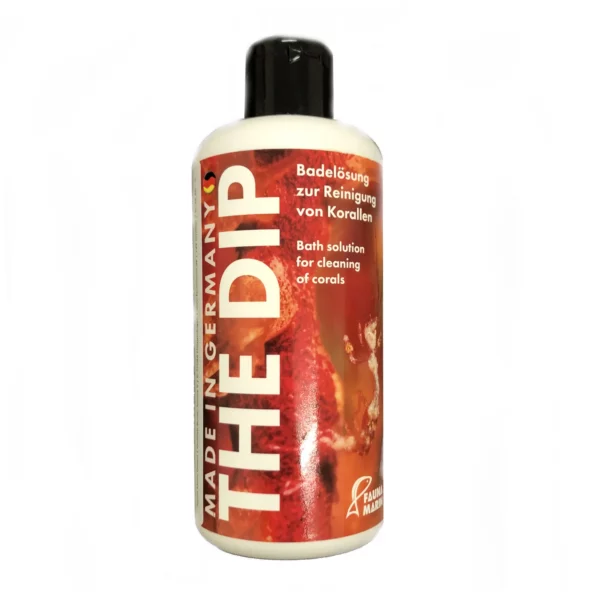Red Sea DipX
€7,50 – €148,00
Red Sea DipX is a highly effective dip for safely introducing new corals
Red Sea DipX is a highly effective dip for safely introducing new corals
A simple 15-minute bath in DipX before placing a new coral in the aquarium will help eliminate unwanted “hitchhikers,” ensuring the safety of your reef.
New corals often come with hidden unwanted “hitchhikers” tucked away in their crevices. These tiny creatures are typically invisible to the naked eye, and once they enter the aquarium, they can move on to other corals, potentially harming your delicate reef ecosystem.
Over the years, reef hobbyists have tried various bath solutions like fresh water, iodine, and even household disinfectants. While these methods may repel some hitchhikers, they do not address all of them.
For the past few years, we have been experimenting with tanks filled with infested corals and have compared a wide range of commercially available dips and other repelling ingredients, looking closely at their effectiveness and overall safety for the corals.
The outcome is Red Sea DipX – a unique blend of essential oils, free from inorganic disinfectants. Our tests indicate that DipX is completely safe for all types of corals and is more effective than any other solution we tested.
Corals that were treated with Red Sea DipX continued to repel unwanted “hitchhikers,” even if they had previously been dipped in other solutions. Conversely, corals that were dipped in other solutions after using DipX did not repel any pests.
FAQ
Can I use Red Sea DipX in my aquarium?
- Absolutely not! DipX should only be used in a separate bath and must not be used inside an aquarium. For heavily infested aquariums (where the issue is not limited to just a few individual corals), we highly recommend removing all corals and rockwork and dipping them in large external containers.
Can I use DipX directly in a quarantine tank for prolonged periods of time?
- No. Corals should only be immersed in a DipX bath for a maximum of 15 minutes at a time. The DipX bath solution can be reused for up to four batches of corals or rocks but should be discarded within 2 hours after preparation.
Will DipX repel the eggs of flatworms and Nudibranchs?
- No, the chitin shell of the eggs protects them against all coral dips. Eggs are typically located in the exposed parts of the skeleton at the bottom of the colony and may not be visible during inspection. We recommend placing the coral in a separate quarantine aquarium for a 22-day period, repeating the dipping procedure on day 11 and day 22. If the eggs are allowed to hatch in an established (not a dedicated quarantine) aquarium, the hatchling larvae can survive without a host for several days and can swim between colonies.
Should I use DipX on live rocks?
- Yes. Live rocks can introduce many “unwanted hitchhikers” to a new aquarium, including bristle worms, Asterina seastars, vermetid snails, mantis shrimp, and pistol shrimp. Therefore, it is highly advisable to immerse live rocks in a DipX bath before adding them to your aquarium.
Should I use DipX with Anemones?
- In general, anemones such as Carpet, Bubble tip, Sebae, and Candy anemones do not usually harbor hitchhikers. However, Dicosoma and Ricordea anemones are attached to rocks that can carry hitchhikers, so using DipX is recommended before introducing them to a new aquarium.
Can I use DipX with other invertebrates such as starfish, clams, worms, etc.?
- No, DipX should be used exclusively for corals and live rock!
Can I use Red Sea DipX for fish?
- Absolutely not! DipX is coral-safe but may be harmful to fish.



